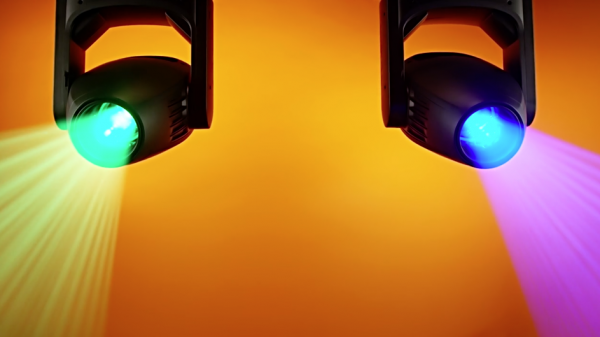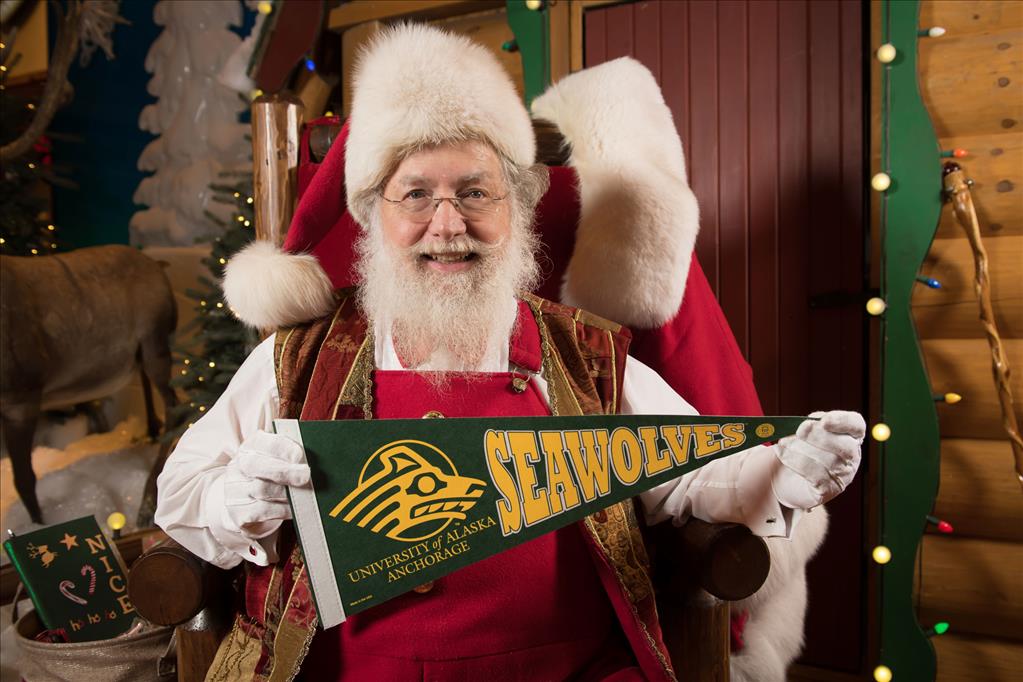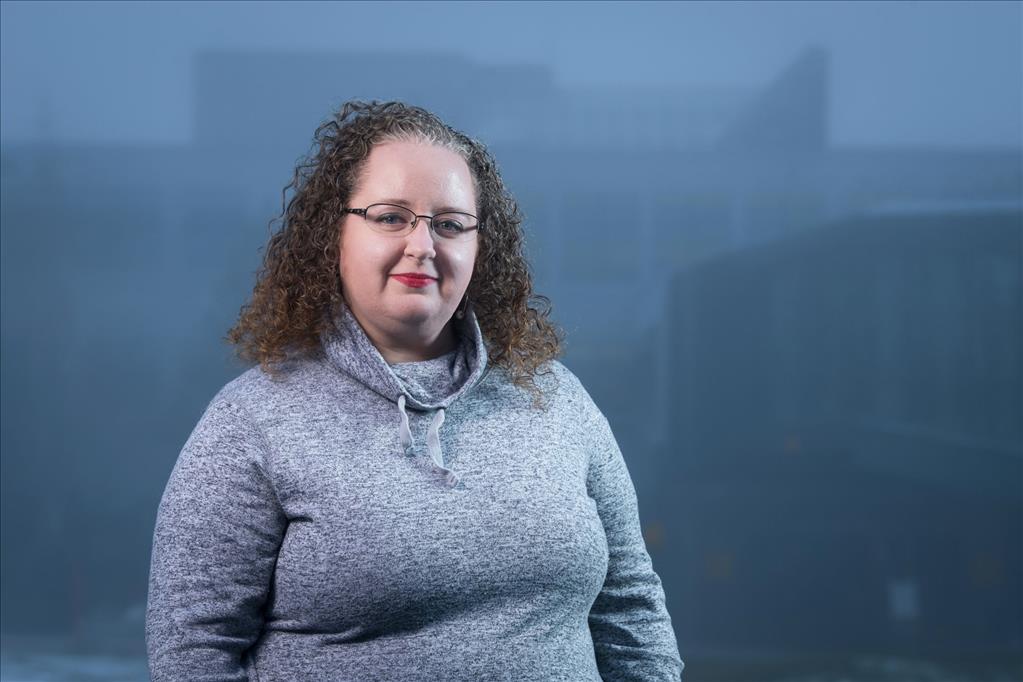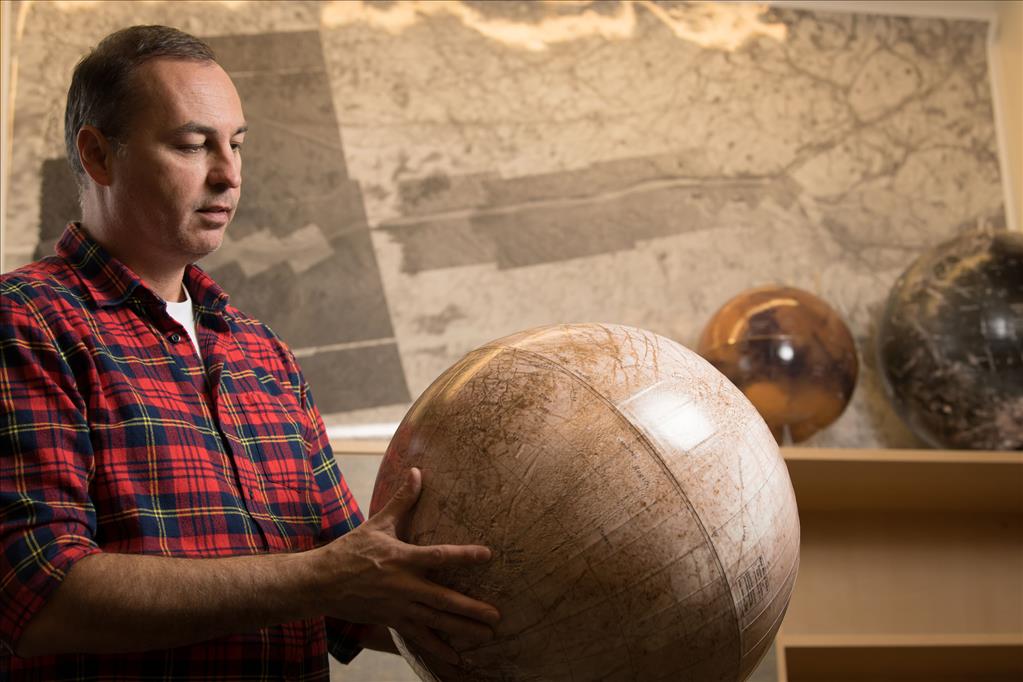New state-of-the-art wireless luminaires to enhance lighting design for UAA theatre and dance productions
by Jess |
Dan Anteau can hardly believe how lucky UAA's dance choreographers and student lighting designers will be - once 11 new automated lighting fixtures arrive here in the next few weeks.
Dancers, lighting techs, actors and audiences can thank the successful grant application that Anteau drafted on behalf of the Department of Theatre and Dance. Student fees bankroll the Innovative Technology Solutions Fund (ITSF) that covered purchase of the lights. A major goal of the fund is to support projects that "develop, support or inform the technology skills and abilities of UAA students" and "positively impact the learning environment and foster student success." The new lights will illuminate student theatre productions and dance performances on the Mainstage and the Harper Studio beginning in fall 2018.
This lighting acquisition is a very big deal, Anteau will tell you. The lights are the latest version of LED luminaires from Ayrton, a French lighting equipment and design firm capable of scaling up to illuminate performers like Lady Gaga at the Super Bowl or Justin Bieber and Celine Dion on global tours.
But Anteau, a professor of light and sound design, knows their value at a very intimate level. He's spent the last decade nursing along the department's four existing 18-year-old automated lighting fixtures. He bought them for the department when he returned to his undergraduate alma mater in 2001 (after earning an M.F.A. in Illinois and also teaching for a while in Hawaii.)
Those old lights were great then, he says, but became obsolete within five years; today "they are dinosaurs." Still, it's what the department has, and student light designers have kept them functioning alongside other conventional lights. But technology has grown at a fast clip, and the new lights can do things the old ones never imagined.
A bit of a Cinderella story
So part of the fun of this story is hearing Anteau talk about how this all happened. One day late last year, an email popped up on his desktop screen, inviting applications for UAA's ITSF. He'd never heard of the fund, but he teaches technology and he wondered if lighting would qualify.

The 80-pound, 3-foot high lights will come cross-country by truck and to Alaska by barge from Seattle. Theatre staff will install them within weeks of their arrival. A workshop for student choreographers and lighting designers is planned for this summer to bring users up to speed for fall productions. (Photo provided by UAA Department of Theatre & Dance)
Then out of the blue, in one of the journals he follows, he saw an advertisement for the Ayrton lights. The company was new to him, and this light was a first-generation for them. He started digging: "Everyone I talked to said they were amazing." He had a good long chat with a lighting firm out of Las Vegas. They'd gotten some as demos: "He said they put them up in a shootout with other lighting instruments to see which is brighter, which one has better color mixing, which one is cooler." The Ayrton outperformed everything out there.
So Anteau decided to jump. He filed the ITSF application in time for the Feb. 9 deadline. He wanted 12 lights, but their cost exceeded the grant amount, so he had to dial back to 10.
"I remember going home and telling my wife, oh my gosh, if they fund this it will be so amazing." He anticipated partial funding, and that perhaps he'd be back to cobbling light design with three or four new ones alongside the dinosaurs, but not enough capacity to fully light UAA's stage, or spread to cover both the Mainstage and the Harper Studio.
He was teaching one day when an excited faculty member burst into his classroom: "Dude! You got the money!"
Anteau didn't understand, so they huddled in the hallway, and he learned his grant had been fully funded. Next came a competitive bidding process for vendors, and that brought the cost per light down enough to be able to purchase 11. His revised application was accepted. He felt like he'd won the lottery.
What's so special about these lights?
First, there are technical features (watch a video here) that mean a lot to light designers: white light at 23,000 lumens; 13 lenses delivering an 8:1 zoom ratio and a range of 7-56 degrees (they currently live with 18-20 degrees, only capable of covering a small part of the stage); a built-in color mixing system and color correction; shutters and sophisticated templates or gobos to shape and characterize light quality.

The LED factor means bulbs won't burn out. The lights can run on existing 110 voltage. They feature built-in filters and templates, or gobos, that allow designers to more fully manipulate light on stage. (Photo provided by UAA Department of Theatre & Dance)
The lights, about three feet tall and 80 pounds each, are wireless and operate off a very accessible touchscreen interface, but the system accommodates a more sophisticated user capable of programming a complex interface.
In practical terms, the lights are four times more powerful than anything the theatre department now owns.
Except for musicals, theatre lighting leans toward the subtle. These new lights have enough sophistication and capacity for nuance to work well storytelling in plays. Theatre also has other stage assets - props, scene painting, costumes, sets - to communicate with the audience.
Dance is a more limited production. It often features an empty stage cleared for the dancers, with most storytelling context - beyond costumes - provided by lighting and projection.
"Dance will certainly benefit," said Anteau, "because it's so active. You can be a lot bolder with your lighting choices."
Brian Jeffery, choreographer and dance professor, concurred. "This is definitely any theatre tech geek's dream. The new equipment offers the department endless possibilities for creating evolving environments with light onstage."
The new luminaires open the door for choreographers and lighting designers to collaborate much more deeply in how to tell the story of a dance or a drama/comedy on stage. Anteau and theatre/dance faculty are planning a summer workshop to bring students up to speed for fall productions.
Ready for the real world
UAA's new luminaires are so cutting edge that the Alaska Center for the Performing Arts doesn't own any. Touring shows have brought them up for temporary use at the PAC, and they are the wave of the future.
Student lighting designers and dance alums say working with the new lights will better position them for the creative job market.
Melissa Jabaay graduated from UAA in 2010 with a theatre/dance major. She teaches dance as an adjunct at UAA and at Alaska Dance Theatre. She works downtown at the PAC as a stage manager and sometimes a lighting designer.
"We have the best electricians at the Performing Arts Center, but they don't have these automated light fixtures to work on," she said. "It's so cool that we will have them at UAA."
She's choreographed New Dances at UAA, both as a student and now as a teacher. She's looking forward to new collaborative opportunities the lights will create. "My whole dance effort next year will include using these new lights," she said.
James Branstetter, a double major in mechanical engineering and theatre, got a little practice on an earlier generation of the luminaires when he competed in an early round of a Hog Factor competition, a collegiate programmed lighting contest. His event was virtual, meaning he downloaded and installed software so he could virtually design a set. "We had lots of fun and did a good job with it," he said.
He's done the lighting design for several choreographers at UAA. "When you are lighting their dance, you feel as if you are lighting them - they put so much of themselves into the dance," he said.
Branstetter hopes theatre lighting design will be a career. But he wants to go a step further. Drawing on his engineering know-how and his theatre experience, he hopes to design future generations of automated light fixtures.
Joshuah Rutten is a theatre major "in love with the tech side." His goal in life is to be a game show host. He grew up watching and loving shows like The Price is Right, Match Game, Press Your Luck and Tattletales.
The theatre classes have prepared him to be a sophisticated emcee; he's already volunteering at local conventions so he can add the experience to his resume.
But the lighting on competitive game shows also interests him, and the new lights UAA is getting are the type that can create the flash and energy that is inherent in the game show environment. He figures he has two shots at the industry: perhaps he can make it as game show host. If not, he'd be just as happy doing their lighting design.
Written by Kathleen McCoy for the UAA Office of Advancement
 "New state-of-the-art wireless luminaires to enhance lighting design for UAA theatre
and dance productions" is licensed under a Creative Commons Attribution-NonCommercial 4.0 International License.
"New state-of-the-art wireless luminaires to enhance lighting design for UAA theatre
and dance productions" is licensed under a Creative Commons Attribution-NonCommercial 4.0 International License.














